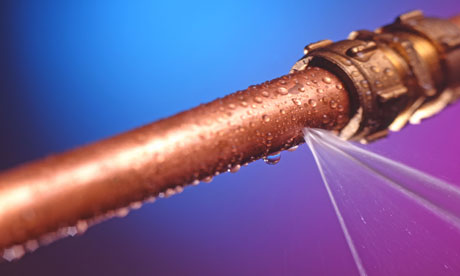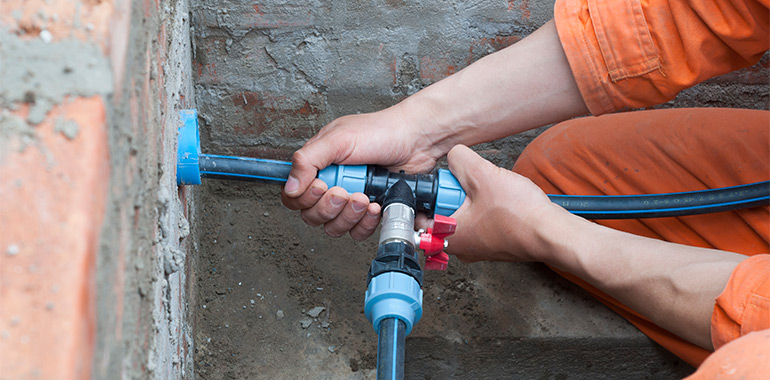This article which follows pertaining to How To Fix Noisy Pipes is relatively captivating. Don't bypass it.

To detect loud plumbing, it is essential to figure out first whether the undesirable noises occur on the system's inlet side-in other words, when water is turned on-or on the drainpipe side. Noises on the inlet side have actually varied reasons: extreme water pressure, used valve and also faucet parts, poorly connected pumps or various other home appliances, inaccurately placed pipeline fasteners, as well as plumbing runs containing a lot of limited bends or other constraints. Noises on the drainpipe side typically originate from poor area or, as with some inlet side sound, a design consisting of limited bends.
Hissing
Hissing noise that takes place when a faucet is opened a little typically signals too much water pressure. Consult your neighborhood water company if you suspect this issue; it will be able to inform you the water pressure in your area and also can set up a pressurereducing shutoff on the incoming water system pipe if needed.
Thudding
Thudding sound, frequently accompanied by shivering pipelines, when a faucet or device valve is shut off is a problem called water hammer. The sound as well as resonance are brought on by the reverberating wave of pressure in the water, which instantly has no place to go. Often opening up a valve that discharges water rapidly right into a section of piping containing a limitation, joint, or tee installation can produce the exact same problem.
Water hammer can usually be treated by setting up fittings called air chambers or shock absorbers in the plumbing to which the problem valves or taps are connected. These gadgets enable the shock wave developed by the halted circulation of water to dissipate airborne they contain, which (unlike water) is compressible.
Older plumbing systems may have brief upright areas of capped pipeline behind walls on faucet runs for the exact same objective; these can eventually fill with water, minimizing or ruining their efficiency. The remedy is to drain pipes the water system completely by turning off the primary water shutoff and also opening up all taps. Then open the main supply valve and close the faucets one at a time, starting with the faucet nearest the valve as well as ending with the one farthest away.
Babbling or Shrieking
Extreme chattering or shrilling that takes place when a shutoff or tap is activated, which usually disappears when the fitting is opened fully, signals loose or defective internal parts. The solution is to replace the valve or faucet with a new one.
Pumps and appliances such as washing machines and dishwashers can transfer motor sound to pipelines if they are poorly attached. Connect such products to plumbing with plastic or rubber hoses-never stiff pipe-to isolate them.
Other Inlet Side Noises
Creaking, squeaking, scratching, snapping, and also touching generally are brought on by the development or tightening of pipelines, usually copper ones providing warm water. The audios take place as the pipelines slide versus loosened bolts or strike neighboring residence framework. You can often pinpoint the location of the trouble if the pipelines are revealed; simply adhere to the audio when the pipelines are making sounds. Probably you will certainly find a loose pipe hanger or an area where pipelines exist so near flooring joists or various other framing items that they clatter versus them. Affixing foam pipeline insulation around the pipes at the point of contact should remedy the problem. Make certain bands as well as hangers are protected and provide ample assistance. Where feasible, pipe fasteners should be affixed to large architectural aspects such as foundation wall surfaces as opposed to to mounting; doing so reduces the transmission of vibrations from plumbing to surface areas that can magnify as well as transfer them. If affixing bolts to framing is unavoidable, cover pipelines with insulation or other resilient product where they call fasteners, and also sandwich the ends of new bolts between rubber washers when mounting them.
Remedying plumbing runs that struggle with flow-restricting tight or various bends is a last option that needs to be embarked on only after consulting a proficient plumbing professional. However, this circumstance is fairly usual in older homes that might not have been built with interior plumbing or that have seen numerous remodels, particularly by beginners.
Drain Noise
On the drainpipe side of plumbing, the chief objectives are to eliminate surfaces that can be struck by dropping or rushing water and also to insulate pipelines to include inescapable noises.
In brand-new building, bath tubs, shower stalls, bathrooms, and also wallmounted sinks as well as containers ought to be set on or versus resilient underlayments to minimize the transmission of sound with them. Water-saving commodes as well as taps are less loud than conventional models; mount them as opposed to older types even if codes in your area still allow making use of older fixtures.
Drainpipes that do not run up and down to the cellar or that branch into horizontal pipe runs supported at flooring joists or various other mounting present especially bothersome sound issues. Such pipelines are large enough to radiate significant resonance; they additionally carry considerable quantities of water, that makes the scenario worse. In new construction, specify cast-iron dirt pipelines (the huge pipelines that drain pipes commodes) if you can manage them. Their massiveness contains much of the noise made by water going through them. Additionally, stay clear of transmitting drainpipes in walls shared with rooms and also areas where individuals collect. Wall surfaces consisting of drains must be soundproofed as was explained earlier, using double panels of sound-insulating fiberboard as well as wallboard. Pipes themselves can be wrapped with special fiberglass insulation made for the objective; such pipelines have a resistant plastic skin (in some cases including lead). Results are not always satisfactory.
If Your Plumbing is Making These Sounds, There’s a Problem
A Bang or Thump When You Turn Off a Faucet
If a loud bang or thump greets you each time your turn off running water, you likely have a water hammer. A water hammer occurs when the water velocity is brought to a halt, sending a shock wave through the pipe. It can be pretty jarring — even worse, damaging to your plumbing system. All that thudding could loosen connections.
Strange Toilet Noises
You’re so familiar with the sounds your toilet makes that your ears will be attuned to anything out of the ordinary. Fortunately, most unusual toilet noises can be narrowed down to just one of several problems.
Foghorn sound:
Open the toilet tank Flush the toilet When you hear the foghorn noise, lift the float to the top of the tank If you’re ambitious, you can remove the ballcock valve and disassemble it to replace the washer. Or you can more easily replace the ballcock valve entirely. This device is relatively inexpensive and available at most any hardware store.
Persistent hissing:
The hissing following a flush is the sound of the tank filling. It should stop once the tank is full. But if the hissing continues, it’s likely because water is leaking out of the tank. The rubber flap at the bottom of the tank can degrade, letting water slip through and into the bowl. That’s why the tank is refilling continuously. Fortunately, this is an easy fix:
Cut the water to the toilet by closing the shutoff valve on the water supply line. Flush the toilet to drain the tank. Disconnect the flapper Attach the new flapper Gurgling or bubbling:
Gurgling or bubbling suggests negative air pressure in the drain line, likely resulting from a clog. As air releases, it causes the water in the toilet to bubble. This could either be a minor issue or a major one, depending on the clog’s severity. Clogs can be caused by toilet paper or more stubborn obstructions such as tree roots. If you can’t work out the clog with a plunger, contact a professional plumber for assistance because a clog of this magnitude could lead to filthy and unsanitary sewage backups in your sink bathtub.

Do you appreciate reading about Why Do My Pipes Make Noises? Give a remark down the page. We'd be interested to know your feelings about this post. We hope that you visit us again soon. Please take a moment to share this article if you liked it. Thanks for taking the time to read it.
Additional Resources